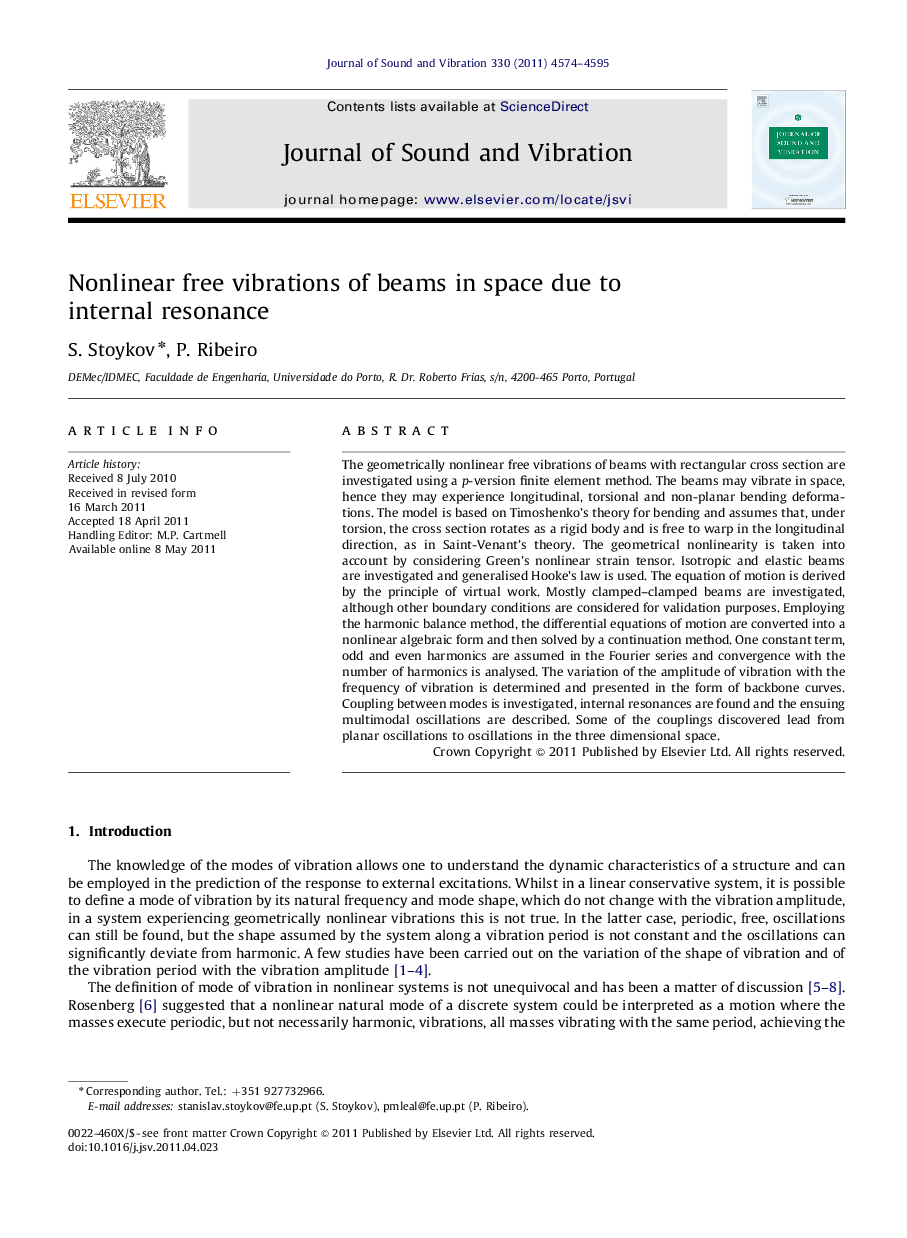| کد مقاله | کد نشریه | سال انتشار | مقاله انگلیسی | نسخه تمام متن |
|---|---|---|---|---|
| 289519 | 509684 | 2011 | 22 صفحه PDF | دانلود رایگان |

The geometrically nonlinear free vibrations of beams with rectangular cross section are investigated using a p-version finite element method. The beams may vibrate in space, hence they may experience longitudinal, torsional and non-planar bending deformations. The model is based on Timoshenko’s theory for bending and assumes that, under torsion, the cross section rotates as a rigid body and is free to warp in the longitudinal direction, as in Saint-Venant’s theory. The geometrical nonlinearity is taken into account by considering Green’s nonlinear strain tensor. Isotropic and elastic beams are investigated and generalised Hooke’s law is used. The equation of motion is derived by the principle of virtual work. Mostly clamped–clamped beams are investigated, although other boundary conditions are considered for validation purposes. Employing the harmonic balance method, the differential equations of motion are converted into a nonlinear algebraic form and then solved by a continuation method. One constant term, odd and even harmonics are assumed in the Fourier series and convergence with the number of harmonics is analysed. The variation of the amplitude of vibration with the frequency of vibration is determined and presented in the form of backbone curves. Coupling between modes is investigated, internal resonances are found and the ensuing multimodal oscillations are described. Some of the couplings discovered lead from planar oscillations to oscillations in the three dimensional space.
► 3D geometrically nonlinear beam model is presented in time and frequency domain.
► Free vibrations in a plane and in space are analysed.
► Due to a bifurcation, vibrations in one plane can lead to oscillations in 3D space.
Journal: Journal of Sound and Vibration - Volume 330, Issues 18–19, 29 August–12 September 2011, Pages 4574–4595